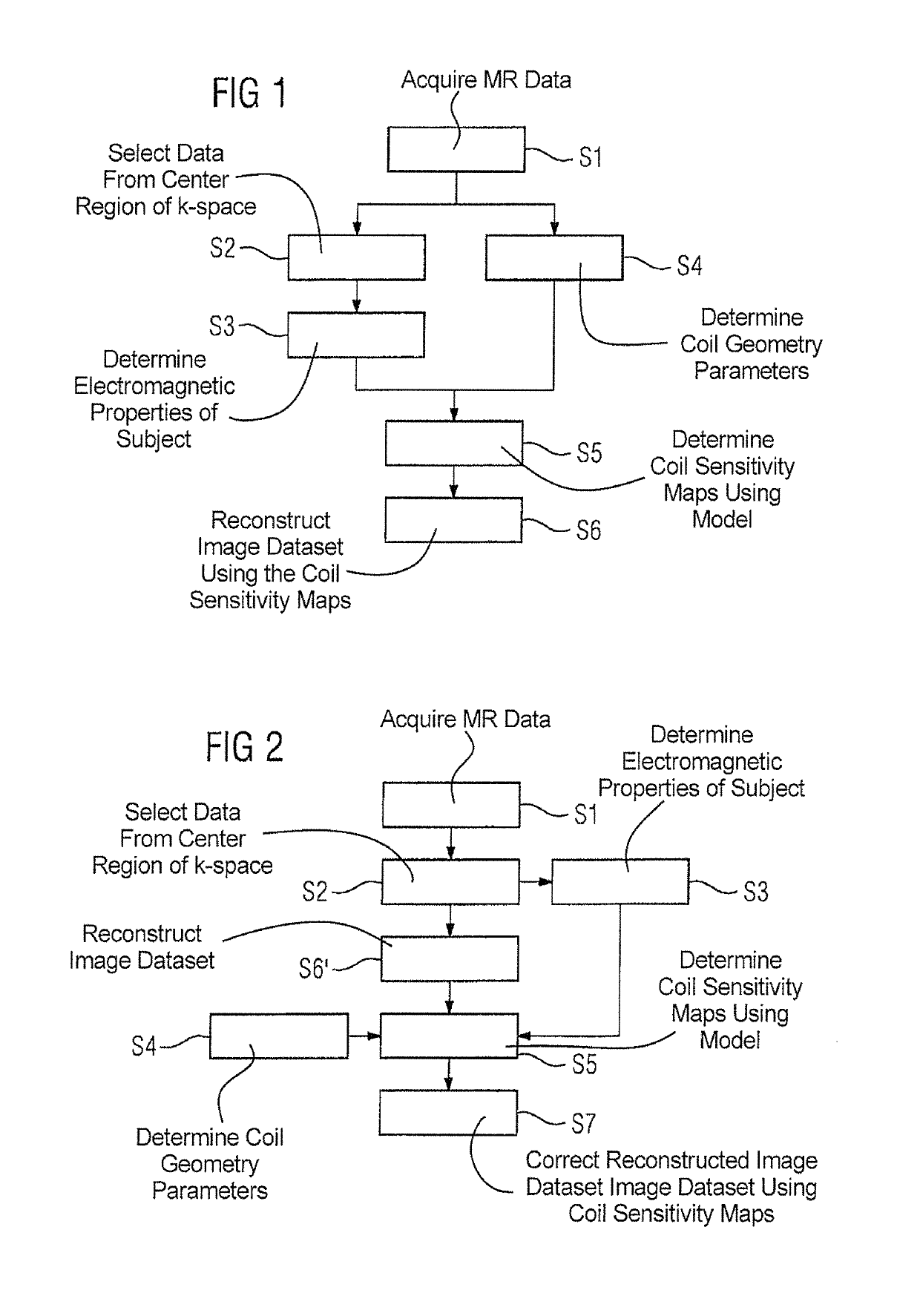Method and magnetic resonance apparatus for determining absolute receive sensitivity maps for reception coils
a magnetic resonance apparatus and absolute three-dimensional technology, applied in wave based measurement systems, instruments, reradiation, etc., can solve problems such as image artifacts, difficult to discern, and detrimental to a reliable diagnostic assessmen
- Summary
- Abstract
- Description
- Claims
- Application Information
AI Technical Summary
Benefits of technology
Problems solved by technology
Method used
Image
Examples
Embodiment Construction
[0047]FIG. 1 shows a flowchart of a first exemplary embodiment of the method according to the invention, as used for improving the reconstruction of magnetic resonance image datasets in accelerated parallel imaging (PAT). In a first, generally known step S1 of this method, magnetic resonance data are acquired that will form the basis of the magnetic resonance image dataset to be reconstructed later. In this process, a region about the center of k-space is fully sampled, whereas undersampling exists outside this region.
[0048]In a step S2, the magnetic resonance data from the fully sampled region about the k-space center (also known as autocalibration lines) are used to determine relative reception sensitivity maps for the number of reception coils used; the reference value used here is the square root of the sum-of-squares of all the individual coil sensitivities (ROOT-SOS).
[0049]In a step S3, the procedure described in the above-cited article by José P. Marques is used to determine ...
PUM
 Login to View More
Login to View More Abstract
Description
Claims
Application Information
 Login to View More
Login to View More - R&D
- Intellectual Property
- Life Sciences
- Materials
- Tech Scout
- Unparalleled Data Quality
- Higher Quality Content
- 60% Fewer Hallucinations
Browse by: Latest US Patents, China's latest patents, Technical Efficacy Thesaurus, Application Domain, Technology Topic, Popular Technical Reports.
© 2025 PatSnap. All rights reserved.Legal|Privacy policy|Modern Slavery Act Transparency Statement|Sitemap|About US| Contact US: help@patsnap.com


